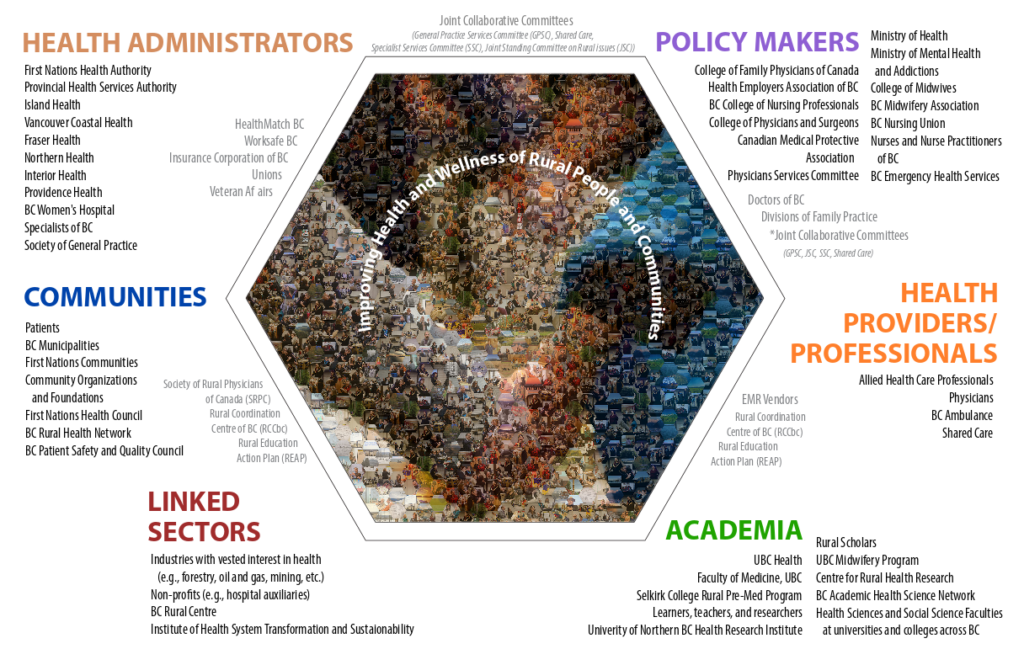Planning for Climate-Resilient Communities in BC
Adaptation to ecosystem disruption is achieved through developing sustainable ways of living and efficient responses against its impacts. In Chapter 2, mitigation and adaptation were explored at the global, national, and provincial levels, however, these concepts are also important to build community-level resilience. Australia’s National Strategy for Disaster Resilience defines a resilient community as “one whose members are connected to one another and work together in ways that enable it to function in the face of stress and trauma”.1 When mitigation and adaptation actively incorporate local and traditional resources, communities are more able to prevent, respond to, and recover from climate-induced outcomes relatively independently, without over-reliance on external support. This creates a self-sustainable system against ecosystem disruption and leads to increased community resilience and decreased vulnerability.
It is important, however, to recognize that every community has unique characteristics and faces unique challenges. For example, different regions of BC face varying climate risks such as drought, forest fire, or flood, as a result of their distinctive geographies. Similarly, communities also possess different resources including social connectivity, knowledge of local environments, or access to public services, thus making it difficult to lay out a universal climate adaptation model. To address this issue, the Torrens Resilience Institute of Australia has created a basic framework to categorize various community characteristics into physical, procedural, and social enablers of community resilience:
- Physical enablers include infrastructure to support communities’ physiological needs and safety, such as healthcare, food and water, utilities, and transportation.
- Procedural enablers are the presence of information, experiences, and strategies that guide policy makers and community members into effectively utilizing the existing physical enablers. This category includes risk analysis, cultural and traditional knowledge, and emergency response policies.
- Social enablers encompass community cohesion and motivation, which span across a sense of unity, shared values, willingness to overcome challenges, and respected local leadership.2
BC has taken initiative in strengthening the above resilience enablers. Initiatives like the Public Infrastructure Engineering Vulnerability Committee (PIVEC) Protocol were adopted for climate change risk and vulnerability assessment of major provincial infrastructure. This protocol goes through systematic reviews of future potential climate change events and estimates a community’s adaptive capacity.3,4 For example, the Nanaimo Regional General Hospital underwent a climate change vulnerability assessment in 2018 to identify potentially vulnerable building systems, future medium- and high-risks, and appropriate recommendations.5 Other climate change risk analyses done through the PIVEC protocol include the Xwu’nekw Park sea dike in Squamish, wastewater treatment plant in Tofino, stormwater management system in Nelson, and the Coquihalla Highway which connects Hope, Merritt, and Kamloops.6
In addition, the First Nations Health Authority (FNHA) has implemented the Indigenous Climate Health Action Program (ICHAP) to actively utilize Indigenous leadership and knowledge in building climate resilience. The program provides funding for community-driven action projects that foster the population’s health and wellbeing.7 Similarly, the federal government provides Indigenous Community-Based Climate Monitoring Funds to its Indigenous partners.
The federal Climate Action Map provides an overview of climate adaptation strategies in BC. A few examples are outlined below:
- The Ulkatcho Indian Band was one of BC’s 2019-2020 funding recipients which proposed a project to build monitoring capacity for changes in their agricultural system, which is a significant traditional practice.8
- The Salt Spring Island community has also demonstrated strong social enablers. A concern for sustainability and preservation of their watershed led to collective action against extensive logging and land clearing. This resulted in a series of partnerships between the government and the Salt Spring Island Watershed Protection Alliance (SSIWPA), in which the local SSIWPA members provide input based on community’s needs in related policies.9,10
For more examples of climate adaptation initiatives in the province, go to the Climate Action Map website.11
Climate Change and Rural Health System Response
Communities are complex systems with specific physical, social, environmental, and cultural characteristics.12-15 Each community must be examined as a unique entity when determining climate change health vulnerability and resilience factors, rather than ‘units for top-down intervention’ receiving centralized responses.12 Community collaboration with other stakeholders from the Rural Coordination Centre of BC (RCCbc)’s Pentagram Plus Partnership (Figure 1) will therefore be important in developing climate change-resilient health systems. Integrating technology and bridging digital divides, such as encouraging the use of telehealth, will also be an important point of consideration.16 Strengthening rural health services can be accomplished through four adaptation strategies:
- Evaluating community risks and strengthening emergency preparedness.
- Supporting the education and recruitment of generalist health care providers.
- Building systems to train generalists in enhanced skills training.
- Integrating synchronous and asynchronous mechanisms of patient and provider support through telehealth.
This chapter will explore each strategy in detail by considering implementation in rural, remote, and Indigenous communities.


